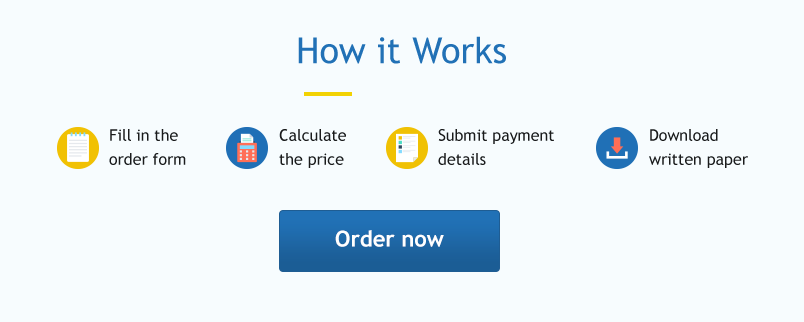
The peer review process explained simply is the backbone of academic publishing. This systematic evaluation ensures only high-quality research reaches publication. Understanding this critical quality control mechanism helps researchers navigate the sometimes daunting journey from submission to publication.
As a cornerstone of scientific integrity, peer review serves as the gatekeeping mechanism that maintains standards across disciplines. This comprehensive guide breaks down every step of the peer review process, offering insights for both new and experienced researchers.
Types of Peer Review
Not all peer review processes work the same way. Different journals employ various methods to assess submitted manuscripts. Each approach offers unique advantages and potential drawbacks.
Single-blind review keeps author identities visible while reviewers remain anonymous. This traditional approach gives reviewers freedom to provide honest criticism without fear of repercussions. However, it may introduce bias based on author reputation or affiliation.
Double-blind review conceals both author and reviewer identities. This approach aims to eliminate potential bias related to author characteristics. Many researchers prefer this method for its perceived fairness and objectivity.
Open peer review makes the entire process transparent. Both authors and reviewers know each other’s identities. Additionally, review comments often become publicly available alongside the published article. This transparency promotes accountability but might deter honest criticism.
Post-publication review occurs after an article appears in print or online. This newer approach enables broader community input. Platforms like PubPeer and journal comment sections facilitate ongoing scholarly discussion about published work.
Registered reports split the review process into two phases. First, researchers submit their methodology for review before collecting data. Then, after study completion, reviewers assess the execution and results. This approach reduces publication bias toward certain outcomes.
Each journal clearly states its peer review approach in the author guidelines. Before submission, familiarize yourself with the specific process your target journal employs. Understanding the review type helps prepare your manuscript appropriately.
Manuscript Evaluation Criteria
When your paper enters peer review, reviewers focus on several key aspects. Understanding these criteria helps prepare stronger submissions and anticipate potential feedback.
Scientific validity stands as the primary concern for most reviewers. They examine your methodology, statistical analyses, and conclusions for soundness. Your research design must appropriately address your research questions. Moreover, your analysis must properly support your conclusions.
Originality and significance determine whether your work advances the field. Reviewers assess how your research builds upon existing knowledge. They look for novel contributions rather than incremental advances. Your introduction should clearly establish this context.
Clarity and organization affect how easily readers can understand your work. Well-structured papers present logical flow from introduction through conclusions. Use clear headings, cohesive paragraphs, and appropriate transitions between sections.
Data presentation and visualization influence how effectively you communicate findings. Tables and figures should complement the text without duplication. Each visual element needs clear labeling and sufficient explanation in the text.
Ethical considerations receive increasing scrutiny from reviewers. They check for appropriate ethical approvals, informed consent procedures, and data handling protocols. Any potential conflicts of interest require transparent disclosure.
Literature engagement demonstrates your knowledge of relevant research. Reviewers expect comprehensive coverage of significant prior work. Your citations should include foundational studies and recent developments alike.
Language and writing quality affect readability and clarity. While minor grammar issues rarely cause rejection, significant problems may prompt revision requests. Consider professional editing services if English isn’t your first language.
Top journals often add criteria like broad interest or interdisciplinary relevance. Understanding the specific expectations of your target journal improves your chances of successful peer review. Many journals publish their review criteria on their websites.
Crafting Effective Responses
Receiving reviewer comments can feel overwhelming. However, strategic responses to feedback greatly enhance your chances of acceptance. The peer review process explained here includes how to address criticism effectively.
Organize feedback systematically before drafting responses. Create a document listing each comment with your planned changes. Group similar comments together to address related issues comprehensively. This organization prevents overlooking important points.
Maintain professionalism regardless of comment tone. Some reviewers may sound harsh or dismissive. Focus on the substance rather than the delivery style. Remember that even critical comments aim to improve your work.
Address every comment thoroughly and directly. Skipping or dismissing comments appears disrespectful of the review process. Even if you disagree with certain points, acknowledge them respectfully.
Provide clear evidence when defending your original approach. If declining to make suggested changes, support your position with references or data. Mere opinions rarely convince editors to override reviewer recommendations.
Highlight major revisions in your response document. Use bold text or color coding to indicate significant changes. This visual emphasis helps editors quickly identify how you’ve addressed major concerns.
Express gratitude for reviewer insights. Begin your response with appreciation for their time and expertise. This professional courtesy sets a positive tone for the remainder of your response.
The response letter often influences editorial decisions as much as the revised manuscript itself. A thorough, respectful response demonstrates your commitment to scholarly rigor and collegial discourse. Many successful submissions result from substantive revisions based on initial feedback.
Common Challenges & Solutions
The peer review process frequently presents obstacles for authors. Understanding common challenges helps prepare effective solutions before they arise.
Contradictory reviewer feedback can create confusion about how to proceed. When reviewers disagree, analyze the underlying concerns rather than specific suggestions. Then address these core issues in your revision. Explain your reasoning clearly to the editor.
Unreasonable requests occasionally appear in review comments. These might include excessive additional experiments beyond the scope of your study. Politely explain practical limitations while offering reasonable alternatives. Editors usually understand reasonable constraints.
Misunderstandings of methodology happen when reviewers come from different subdisciplines. Clarify these points without sounding defensive. Consider adding methodology diagrams or simplified explanations to address confusion.
Delayed reviews can stall your publication timeline. After the typical review period, a polite inquiry to the editorial office is appropriate. Most journals provide estimated timeframes on their websites.
Desk rejection occurs when editors decline papers without external review. This often indicates misalignment with journal scope or major quality issues. Carefully review author guidelines before resubmitting elsewhere.
Reviewer bias may occasionally influence assessment of your work. If you suspect systematic bias, discuss specific concerns with the editor. Focus on objective aspects rather than perceived motives.
• Use reviewer disagreements as opportunities to strengthen your paper • Distinguish between essential revisions and helpful suggestions • Document all changes in your response letter for transparency • Consider requesting additional reviewers if bias seems evident
Most importantly, view the peer review process as collaborative rather than adversarial. Even challenging feedback typically aims to improve scientific communication and research quality.
Tips for Smooth Reviews
Strategic preparation before submission can streamline your peer review experience. These practical tips help avoid common pitfalls and expedite the process.
Select the appropriate journal for your research scope and impact. Mismatched submissions waste time for everyone involved. Review recent issues to confirm your paper aligns with typical content and methodological approaches.
Follow author guidelines meticulously before submission. Format specifications, reference styles, and word limits vary significantly between journals. Noncompliance often triggers immediate returns for correction.
Request specific reviewers when given the option. Suggest experts familiar with your methodology or theoretical framework. However, avoid recommending close collaborators to prevent conflict of interest concerns.
Conduct internal peer review before submission. Ask colleagues to critique your manuscript using the target journal’s criteria. This identifies potential weaknesses before formal review begins.
Prepare quality figures and tables that communicate clearly without text explanation. Reviewers often examine visual elements first. Poor visualizations create negative first impressions that color subsequent evaluation.
Write a compelling cover letter highlighting your contribution’s significance. Explain why your work belongs specifically in this journal. Address potential concerns proactively, especially regarding methodology choices.
Check statistical reporting standards for your discipline and journal. Inadequate statistical description represents a common reason for revision requests. Include appropriate effect sizes and confidence intervals.
Proofread thoroughly before submission. Typographical errors suggest carelessness that may extend to research procedures. Consider professional editing services for non-native English writers.
Following these practices demonstrates professionalism and respect for reviewer time. Well-prepared manuscripts typically receive more constructive feedback and faster processing times. The peer review process explained here works best when authors submit carefully crafted papers.
Frequently Asked Questions
How long does peer review take?
Peer review timelines vary significantly across disciplines and journals. Most initial reviews take between 1-3 months from submission. Higher-impact journals with multiple review rounds may extend this timeline to 6-12 months total.
Several factors influence review duration. Reviewer availability, manuscript complexity, and journal resources all affect processing speed. Some fields like physics use preprint servers while awaiting formal peer review completion.
Many journals now publish average review times on their websites. This transparency helps authors make informed submission decisions. If timing concerns you, consider this information when selecting publication venues.
Can reviews be appealed?
Yes, authors can appeal peer review decisions under specific circumstances. Valid grounds include demonstrable reviewer bias, factual misunderstandings, or procedural irregularities. However, mere disagreement with criticism rarely justifies appeals.
The appeal process typically involves contacting the handling editor with specific concerns. Provide concrete evidence supporting your position. Frame your appeal professionally rather than emotionally. Remember that editors face numerous similar requests.
Appeals succeed most often when identifying clear technical errors in the review. Your chance of success diminishes when challenging subjective assessments of significance or interest. Consider whether addressing concerns through revision might prove more productive than appealing.
How to find peer reviewers?
Journal editors typically identify appropriate reviewers through several methods. They search publication databases for authors with relevant expertise. Editorial board members often recommend colleagues with specific knowledge. Additionally, editors consider author-suggested reviewers when appropriate.
For authors suggesting potential reviewers, consider these strategies:
• Identify researchers who cited your previous work
• Include experts with diverse methodological perspectives
• Consider geographic and institutional diversity
• Avoid suggesting only senior researchers (early career scientists often provide thorough reviews)
However, authors should avoid suggesting reviewers with potential conflicts of interest. These include recent collaborators, institutional colleagues, or personal friends. Transparent disclosure builds trust with editorial offices.
The peer review process explained throughout this guide represents the foundation of scientific publishing. By understanding how peer review works, researchers can navigate the system more effectively. This knowledge helps transform initial submissions into valuable contributions to the scientific literature.
Remember that peer review, despite its imperfections, aims to improve research quality and communication. Approach the process collaboratively, and you’ll find it becomes less mysterious and more manageable with experience.
Ready to Navigate the Peer Review Process with Confidence?
The peer review process explained here gives you a solid foundation, but putting it into practice can still feel daunting. At InformativePapers.com, we specialize in helping researchers successfully navigate peer review.
Our expert services include:
- Manuscript pre-submission review to identify potential weaknesses
- Strategic response guidance for challenging reviewer comments
- Journal selection consulting to find your perfect publication match
- Professional editing to meet the highest academic standards
Don’t let peer review obstacles delay your important research from reaching publication. Our team of experienced academic editors has helped thousands of researchers transform reviewer feedback into successful publications.
Contact our team today to discuss how we can support your publication journey. Or browse our service packages designed for researchers at every career stage.
Let InformativePapers.com be your trusted partner in academic publishing success!



 April 24th, 2025
April 24th, 2025  admin
admin
 Posted in
Posted in 